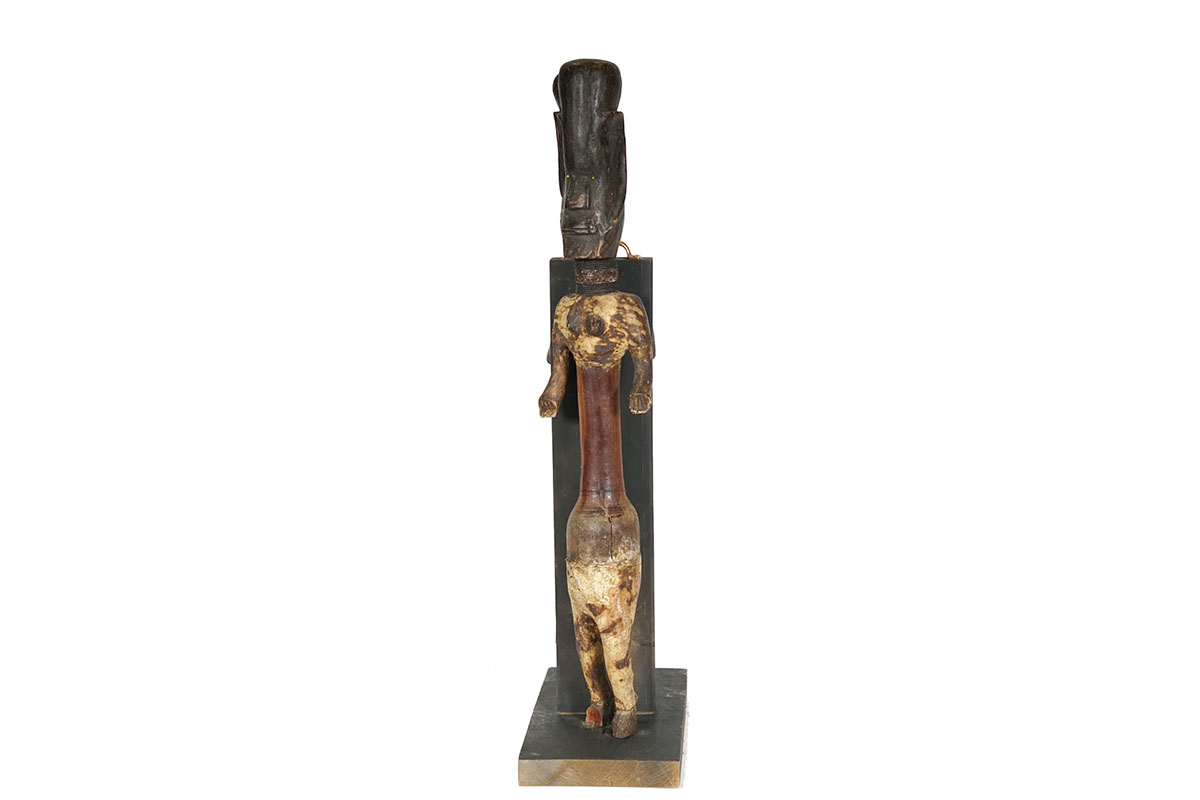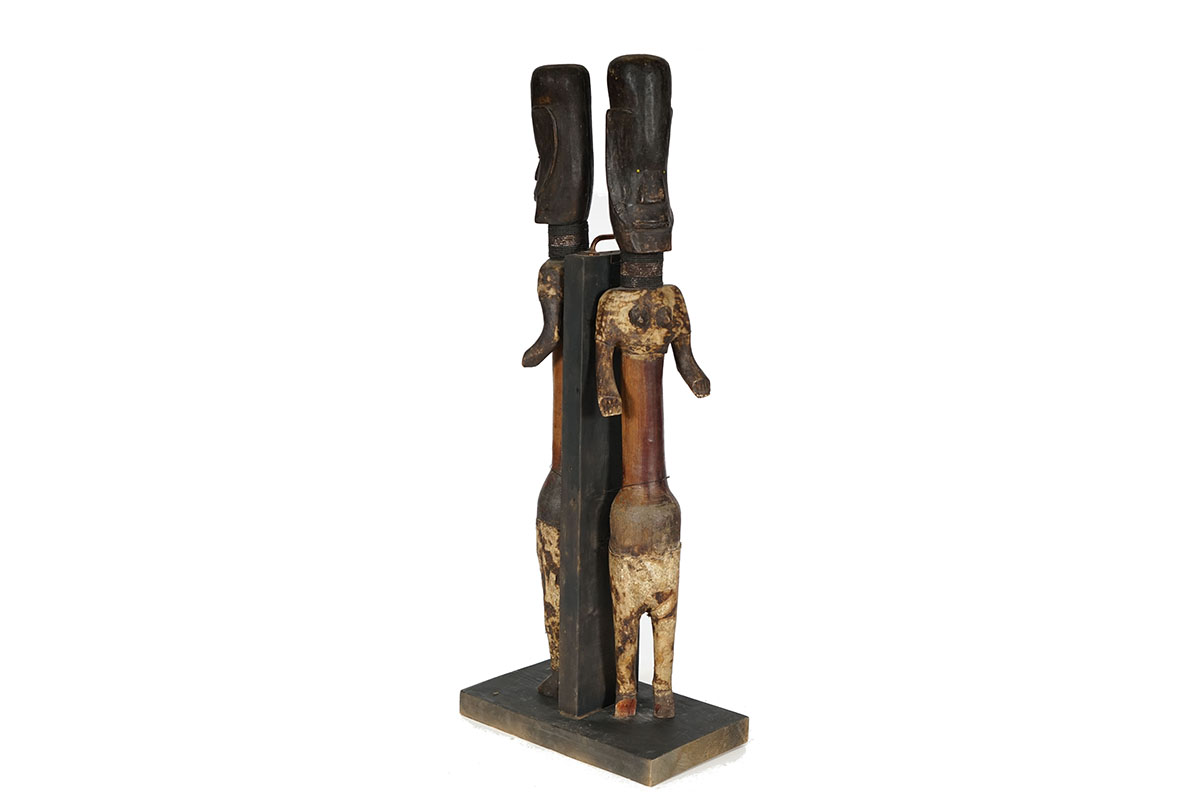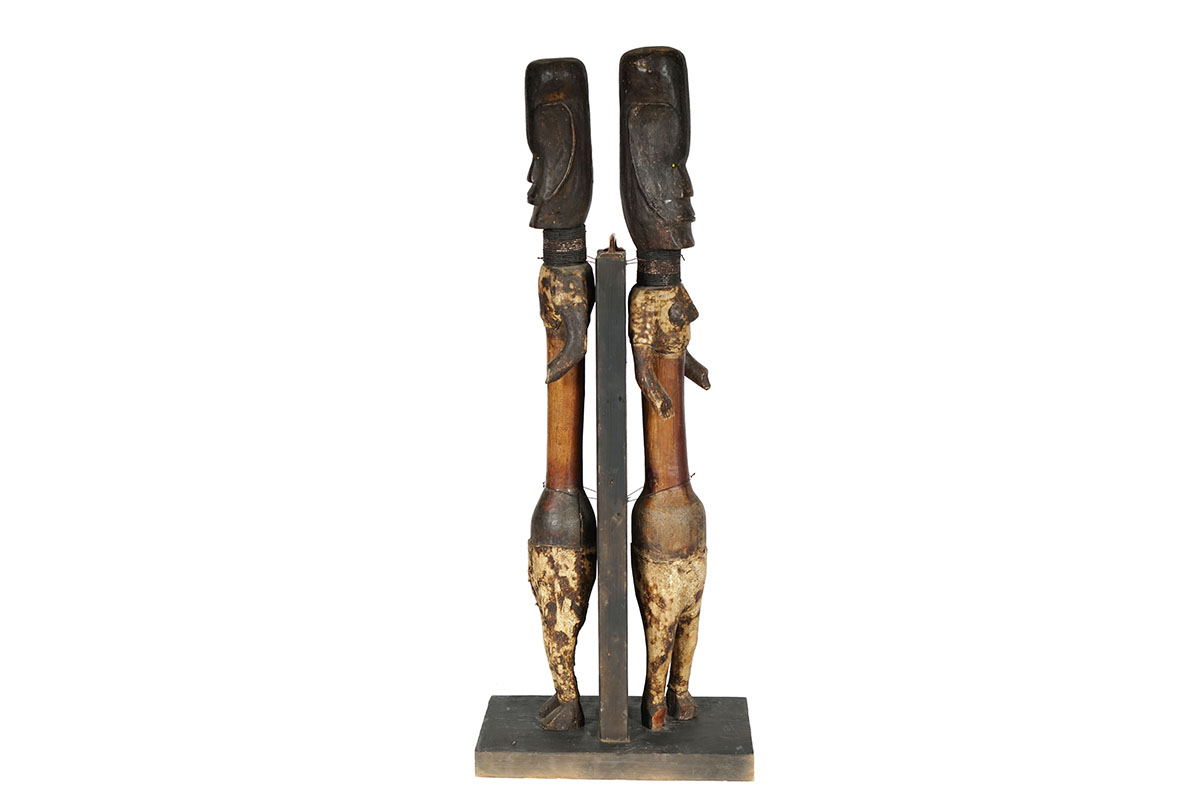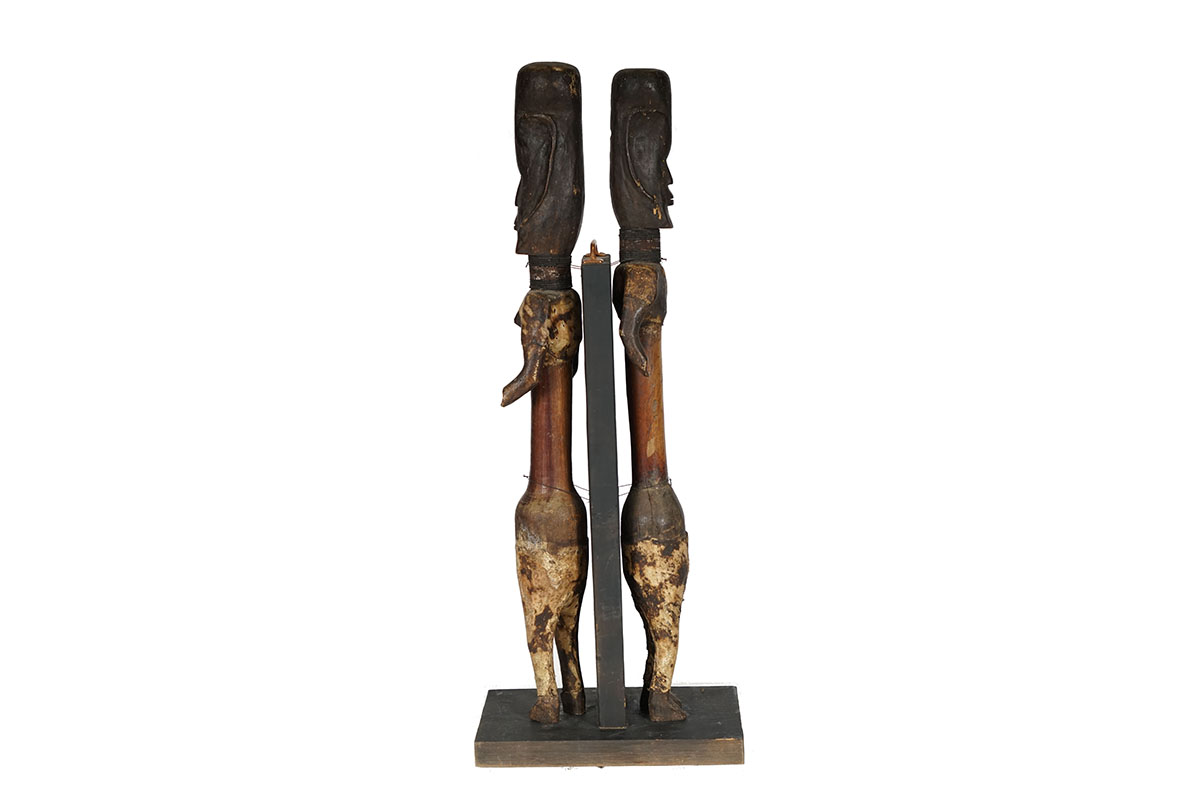Hand carved wooden statue pair from the Luguru people of Tanzania. This statue features a male and woman figure and has unique features including beading on both of the necks and leather wrapped chest and legs. This piece comes with a custom made base.
Late 20th Century Luguru African Sculpture Pair 37.5″ – Tanzania
$320.00
Sold

| Type of Object | Figure, statue |
|---|---|
| Country of Origin | Tanzania |
| Ethnicity | Luguru |
| Approximate Age | Unknown |
| Height (Inches) | 37.5” including base |
| Width (Inches) | 8.5" |
| Depth (Inches) | 14.5" |
| Weight (Pounds) | 21lbs |
Tribe Information
About the Luguru People
“Luguru, also called Ruguru, or Waluguru, a Bantu-speaking people of the hills, Uluguru Mountains, and coastal plains of east-central Tanzania. The Luguru are reluctant to leave the mountain homeland that they have occupied for at least 300 years, despite the relatively serious population pressure in their area and the employment opportunities in the city and on estates. In the late 20th century the Luguru numbered about 1.2 million.
The Luguru observe matrilineal descent and recognize about 50 exogamous, noncorporate clans, which are then divided into some 800 lineages identified with lands, leaders, and insignia (stools, staffs, drums). Historically they rarely had a political organization higher than the lineage level, the exception being when a rainmaker might rise in prominence and demand tribute. Neighbouring peoples also south out Luguru rainmakers. German colonizers imposed a more formal organization, which was continued after World War I. When the British administration chose two “sultans” from among Luguru lineage heads; later subchiefs, headmen, and court officials were named. At independence this system was reorganized, and in 1962 the Tanganyikan government abolished all traditional chiefdoms. The mountain Luguru are now mainly Roman Catholic, while the lowland Luguru are Muslim.
Besides growing crops for their own subsistence, the Luguru export produce to local towns and to Dar es-Salaam. Coffee is grown with some success in the mountains; no cattle are kept because of tsetse fly infestation. Some of the largest sisal estates in Tanzania are in lowlands surrounding Luguru lands, and many non-Luguru have come to work on them. Luguru also sell these people foodstuffs."
Sources:
1. Baquart, Jean-Baptiste. The Tribal Arts of Africa. New York: Thames and Hudson Inc. 1998. Print.
2. The Editors of Encyclopedia Britannica. “Luguru.” Encyclopedia Britannica. Encyclopedia Britannica, Inc., 20 July 1998. Web. 19 Apr. 2017










